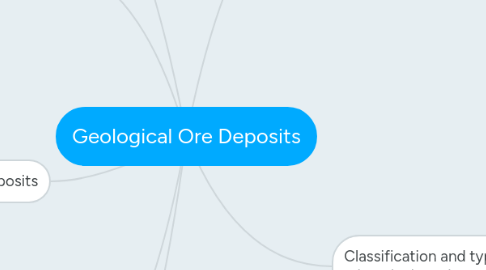Geological Ore Deposits
da Rocelenny Gonzalez


1. Main Types
1.1. Metalics
1.2. Non-Metalics
1.3. Fossil Fuel
2. Economic Viability of ore deposits
2.1. Grade
2.2. Size of the deposit
2.3. Easy access to infrastructure
2.4. Current price for the commodity
2.5. Demand
3. Placer deposits
3.1. Alluvial
3.2. Colluvial
3.3. Eluvial
4. Clay types
4.1. Chinaclay
4.2. Fullers Earth
5. Organic deposits
5.1. Coal
5.1.1. Peat
5.1.2. Lignite
5.1.3. Sub-bituminous coal
5.1.4. Bituminous coal
5.1.5. Sub- anthracite
5.1.6. Antracite
5.2. Fireclay
5.3. Peat
5.4. Oil/ Petroleum
5.4.1. Kerogen
5.4.2. Tar pits
5.4.3. Oil shale
5.5. Residual deposits
6. Commos minerals found in oxidised zones
6.1. Cooper
6.2. Gangue minerals
6.3. Iron
6.4. Silver
6.5. Lead
6.6. Manganese
6.7. Nickel
6.8. Zinc
7. Classification and types of minerals deposits
7.1. Commdity being mineral
7.2. Tectonic setting in which the deposits occurs
7.3. Geological setting of mineral deposit
7.4. Genetic model for the origin of the ore deposits
7.4.1. Orthomagmatic
7.4.1.1. Chromium
7.4.1.2. Titanium
7.4.1.3. Iron
7.4.1.4. Nickel
7.4.1.5. Cooper
7.4.1.6. Platinum- group elements
7.4.1.7. Diamonds
7.4.2. Pneumatolytic and pegmatitic
7.4.2.1. Tin
7.4.2.2. Rare Earth elements
7.4.2.3. Tantalum
7.4.2.4. Beryllium
7.4.2.5. Lithium
7.4.2.6. Molybdenum
7.4.2.7. Tungsten
